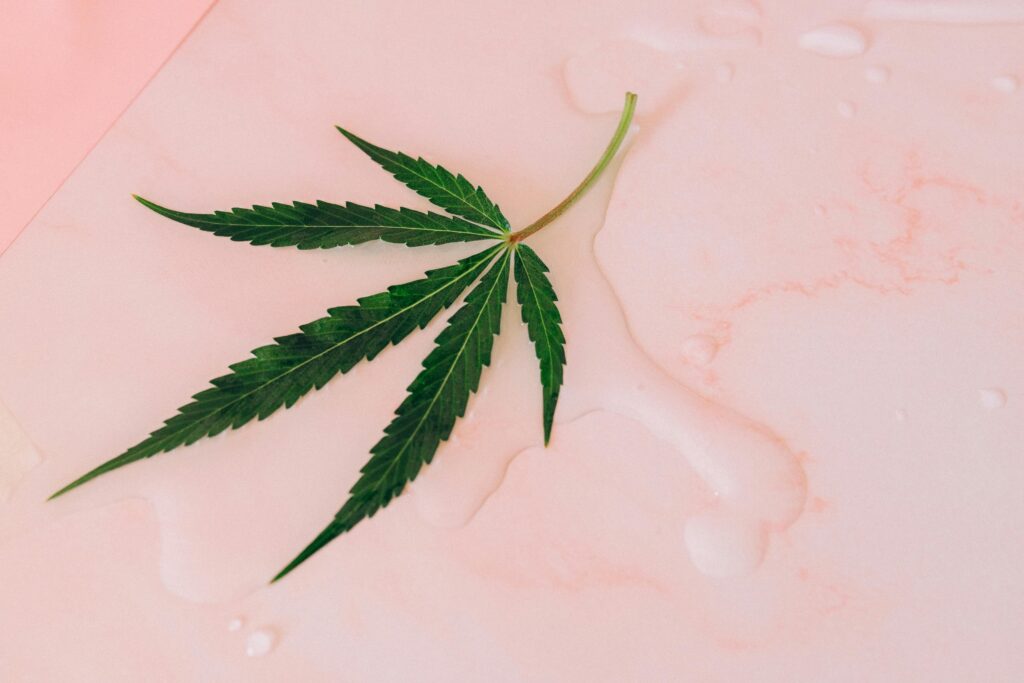Marijuana. It’s one of the most widely used and hotly debated substances in the world today. Once demonized, now decriminalized in many places—and increasingly recognized for its potential medical value. But despite the cultural buzz, many people still don’t fully understand what marijuana actually is on a chemical level. What gives it its therapeutic effects? What causes the “high”? And is there really just one active ingredient—or is the story more complex? At Renew Health, we believe in replacing myth with knowledge. Whether you’re a patient exploring cannabis for symptom relief, a concerned parent, or simply curious, it’s vital to understand what’s going into your body and how it works. In this post, we’ll take you beyond the surface and into the plant itself. We’ll explain the active ingredients in marijuana, how they interact with your body’s systems, why different strains feel different, and how to choose the right type of cannabis for your needs. Let’s uncover the real science behind this ancient—and increasingly modern—plant.
The Misconception: “THC Is the Only Active Ingredient”
When people talk about the “active ingredient” in marijuana, they’re usually referring to tetrahydrocannabinol—or THC. This is the compound most responsible for the psychoactive effects of cannabis: the euphoria, the altered time perception, the “high.” But while THC is certainly a major active ingredient, it’s far from the only one. In fact, marijuana contains more than 500 different chemical substances, over 100 of which are classified as cannabinoids—active compounds that interact with the human body. Focusing solely on THC is like saying the only ingredient in coffee is caffeine. Yes, it’s powerful. But it’s the full cocktail of compounds—cannabinoids, terpenes, flavonoids, and more—that determines how marijuana affects the user. The truth is that marijuana’s impact is shaped by the interplay between many active ingredients. Understanding each of these is key to using cannabis safely and effectively—whether recreationally or therapeutically.
THC: The Most Well-Known Cannabinoid
Tetrahydrocannabinol (THC) is the most famous and widely studied cannabinoid. It was first isolated in 1964 by Israeli researcher Raphael Mechoulam and his team, marking the beginning of modern cannabis science. THC binds primarily to the CB1 receptors in the brain—a component of the body’s endocannabinoid system (ECS). These receptors influence a wide range of cognitive and physical functions, including mood, memory, appetite, and pain perception. When THC binds to CB1 receptors, it mimics the action of anandamide—a naturally occurring endocannabinoid sometimes nicknamed the “bliss molecule.” This interaction is what produces the euphoric effects associated with cannabis use. In addition to its recreational uses, THC has well-documented medical benefits, including:
-
Pain relief
-
Nausea and vomiting reduction (especially for chemotherapy patients)
-
Appetite stimulation (particularly useful for HIV/AIDS or cancer patients)
-
Muscle spasticity reduction (e.g., in multiple sclerosis)
-
Sleep promotion
However, THC also has potential side effects. High doses can cause anxiety, paranoia, increased heart rate, impaired coordination, and short-term memory disruption. And regular use in adolescents may affect brain development. For these reasons, understanding your tolerance and dosing carefully is essential when using THC-dominant products.
CBD: The Balancing Ingredient
Cannabidiol (CBD) is the second most prominent active ingredient in marijuana and has become the poster child for non-intoxicating cannabis wellness. Unlike THC, CBD does not produce a high. Instead, it interacts with the ECS in more indirect ways—modulating receptor activity, increasing natural endocannabinoid levels, and influencing other receptor systems such as serotonin and vanilloid receptors. This broad range of interactions gives CBD a host of potential health benefits without the intoxication. CBD is known to:
-
Reduce anxiety and panic
-
Improve sleep quality
-
Alleviate inflammation
-
Protect against neurodegeneration
-
Treat certain types of epilepsy (e.g., with FDA-approved Epidiolex)
-
Reduce cravings and anxiety in addiction recovery
CBD also has a regulatory effect on THC. It can moderate some of the negative psychoactive effects of high-THC strains—such as anxiety or paranoia. That’s why many balanced cannabis strains include both THC and CBD. At Renew Health, we often recommend starting with CBD-dominant products for patients new to cannabis or those seeking relief without the high.
Other Key Cannabinoids in Marijuana
While THC and CBD get most of the attention, they’re only the tip of the cannabinoid iceberg. Here are a few other active cannabinoids found in marijuana and their potential benefits:
CBG (Cannabigerol): Often referred to as the “mother cannabinoid,” CBG is the precursor to THC, CBD, and other cannabinoids. Early research shows potential for:
-
Anti-inflammatory effects
-
Neuroprotection
-
Glaucoma relief
-
Antibacterial activity
CBC (Cannabichromene): A non-intoxicating cannabinoid that may support: -
Pain relief
-
Mood enhancement
-
Neurogenesis
THCV (Tetrahydrocannabivarin): A relative of THC with different effects, often described as: -
Appetite suppressant (opposite of THC)
-
Blood sugar regulator
-
Energy booster
CBN (Cannabinol): A mildly psychoactive cannabinoid formed when THC ages. CBN is known for: -
Sedative effects
-
Anti-inflammatory action
-
Potential use in sleep aids
While these cannabinoids are found in smaller quantities, they contribute to the overall experience—especially in full-spectrum cannabis products. Researchers believe that these “minor” cannabinoids may play major roles in the therapeutic future of cannabis.
The Entourage Effect: How Ingredients Work Together
One of the most important concepts in cannabis science is the entourage effect—the idea that cannabinoids, terpenes, and other plant compounds work synergistically to enhance each other’s effects. First popularized by Dr. Ethan Russo in the early 2000s, the entourage effect explains why whole-plant cannabis extracts may be more effective than isolated THC or CBD. For example:
-
CBD may reduce the anxiety-inducing effects of THC.
-
Myrcene, a terpene, can enhance the absorption of cannabinoids and increase sedative properties.
-
Pinene may help counteract memory impairment associated with THC.
This interaction makes full-spectrum and broad-spectrum products more therapeutically versatile than pure isolates. It also means that two strains with the same THC content can produce very different effects—depending on the presence of other cannabinoids and terpenes.
Terpenes: The Aromatic Co-Stars of Cannabis
Terpenes are aromatic compounds found in many plants—including cannabis—that contribute to its smell, flavor, and therapeutic effects. They may not be classified as cannabinoids, but terpenes have a major influence on how marijuana feels. Common terpenes in cannabis include:
-
Myrcene: Earthy and musky; promotes relaxation and sedation.
-
Limonene: Citrus-scented; elevates mood and reduces stress.
-
Pinene: Pine aroma; improves alertness and memory.
-
Linalool: Floral scent; has calming and anti-anxiety properties.
-
Caryophyllene: Spicy or peppery aroma; interacts directly with CB2 receptors and may reduce inflammation.
Each strain of marijuana contains a unique blend of terpenes, shaping its overall profile. Think of terpenes as the musical score in a movie—they may not be the main action, but they shape how you experience the whole show.
Flavonoids and Other Phytochemicals
Flavonoids are another group of active compounds in marijuana, though they’re often overlooked. These plant pigments contribute to the color of cannabis leaves and buds and may provide antioxidant, anti-inflammatory, and anti-cancer properties. The most common cannabis-specific flavonoids are called cannaflavins. One study found that Cannaflavin A has 30 times the anti-inflammatory power of aspirin—though more research is needed. Together with cannabinoids and terpenes, flavonoids add yet another dimension to marijuana’s complexity and potential.
How Marijuana’s Active Ingredients Enter the Body
The way you consume cannabis affects how its active ingredients are processed by your body. Here are the most common methods and what happens chemically:
Smoking/Vaping: When cannabis is combusted or vaporized, cannabinoids like THCA and CBDA (their raw, acidic forms) are “decarboxylated”—turned into active THC and CBD. These compounds enter the bloodstream via the lungs and take effect within minutes.
Edibles: Ingested cannabis is processed by the liver, where THC is converted into 11-hydroxy-THC—a more potent, long-lasting metabolite. This process takes longer (30–90 minutes) but produces more intense and longer-lasting effects.
Tinctures: Absorbed sublingually (under the tongue), tinctures offer a middle ground—faster onset than edibles, but more precise dosing than smoking.
Topicals: Applied to the skin, cannabis-infused lotions and balms deliver cannabinoids to localized tissues without psychoactive effects.
Capsules and Pills: Offer consistent, delayed-release dosing, helpful for chronic conditions.
Understanding how delivery affects onset, intensity, and duration helps users better plan their experience and reduce the risk of overconsumption.
How Active Ingredients Are Measured and Labeled
In legal cannabis markets, transparency is key. Every product sold at licensed dispensaries is required to list the percentages or milligrams of active ingredients, including:
-
Total THC
-
Total CBD
-
Ratios (e.g., 1:1, 10:1 CBD to THC)
-
Cannabinoid spectrum (full-spectrum, broad-spectrum, isolate)
-
Terpene profile (in premium products)
Lab testing ensures accuracy, safety, and the absence of contaminants like mold or pesticides. At Renew Health, we guide clients in understanding these labels so they can make informed, personalized choices—especially when managing specific health goals.
Choosing the Right Active Ingredients for You
With so many active ingredients, how do you choose the right cannabis product? Start by identifying your primary goal:
-
For anxiety or insomnia: Try high-CBD or balanced strains with calming terpenes like linalool.
-
For chronic pain: Consider THC/CBD blends, possibly with CBG or caryophyllene.
-
For focus or daytime use: Low-THC Sativa strains with limonene and pinene.
-
For appetite stimulation: THC-dominant strains with myrcene or THCV.
-
For neuroprotection or mood: Look for products featuring CBG or CBC.
Consulting a healthcare provider—especially one experienced in cannabinoid medicine—is crucial. At Renew Health, we offer tailored telehealth consultations to help clients find the right blend of active ingredients based on symptoms, medical history, and treatment goals.
Actionable Takeaways
-
Marijuana contains many active ingredients—not just THC.
-
THC is responsible for the high and helps with pain, nausea, and appetite.
-
CBD offers therapeutic benefits without intoxication, including anxiety relief.
-
Other cannabinoids like CBG, CBC, CBN, and THCV offer emerging health potential.
-
Terpenes shape cannabis’s effects through aroma and synergy with cannabinoids.
-
The entourage effect means full-spectrum cannabis may be more effective than isolated compounds.
-
Consumption method affects how active ingredients are absorbed and how long they last.
-
Legal products list cannabinoid and terpene content—read labels carefully.
-
Match your product choice to your health goals and tolerance level.
-
Seek medical guidance when using marijuana for chronic conditions or mental health.
Conclusion
So—what is the active ingredient in marijuana? It’s a great question, but not one with a simple answer. THC may be the most well-known cannabinoid, but the real story is far more complex and interesting. Marijuana is a chemical symphony, not a solo performance. From the balanced calm of CBD to the targeted relief of minor cannabinoids and the subtle mood-shifting influence of terpenes, each component plays a role. At Renew Health, we’re committed to helping patients and curious consumers navigate this complexity with confidence. Whether you’re exploring cannabis for the first time or looking to refine your experience, understanding the active ingredients is your key to safer, more effective use.
Renew Health: Your Partner in Cannabis Education and Care
Phone: 575‑363‑HELP (4357)
Website: www.renewhealth.com


